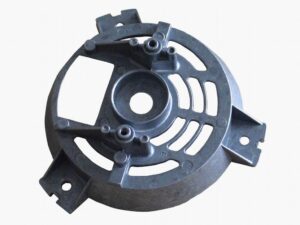
Advantages of Die Casting
Complex Geometry
Die casting can reliably produce custom die cast parts with thin walls and challenging geometry that is durable and dimensionally stable.
Strength
Metal die castings are typically stronger than plastic injection molded parts and more resistant to high temperatures. Metals such as aluminum offer exceptional strength-to-weight ratios.
Precision
Die casting offers typical tolerances ranging from +/-0.003″ – 0.005″ per inch but can go as tight as +/- .001” depending on your specifications, part geometry, and material.
Custom Finishes
Metal finishers can produce cast parts with smooth or textured surfaces, paints, and plating finishes. Finishes can protect from corrosion and improve cosmetic appearance.
Disadvantages of Die Casting
Tooling Cost
While the per piece cost of die cast parts is relatively low, the tooling dies and maintenance costs can require a high initial investment.
Not for Low Quantities
Due to the higher upfront tooling costs, die casting is not economical for low-volume runs. We recommend only considering die casting for quantities greater than 1000.
Lead Times
Before production, many steps must be accomplished first, often taking multiple weeks to execute. These steps include addressing DFM concerns, tool design, manufacturing the tools, and creating samples. The upfront checks and validations make die casting one of the slower manufacturing processes to ramp up compared to others.
Our team of experts will be working with you closely throughout the process and offer suggestions and options to provide you with the best possible turnaround while working to meet your unique needs.





